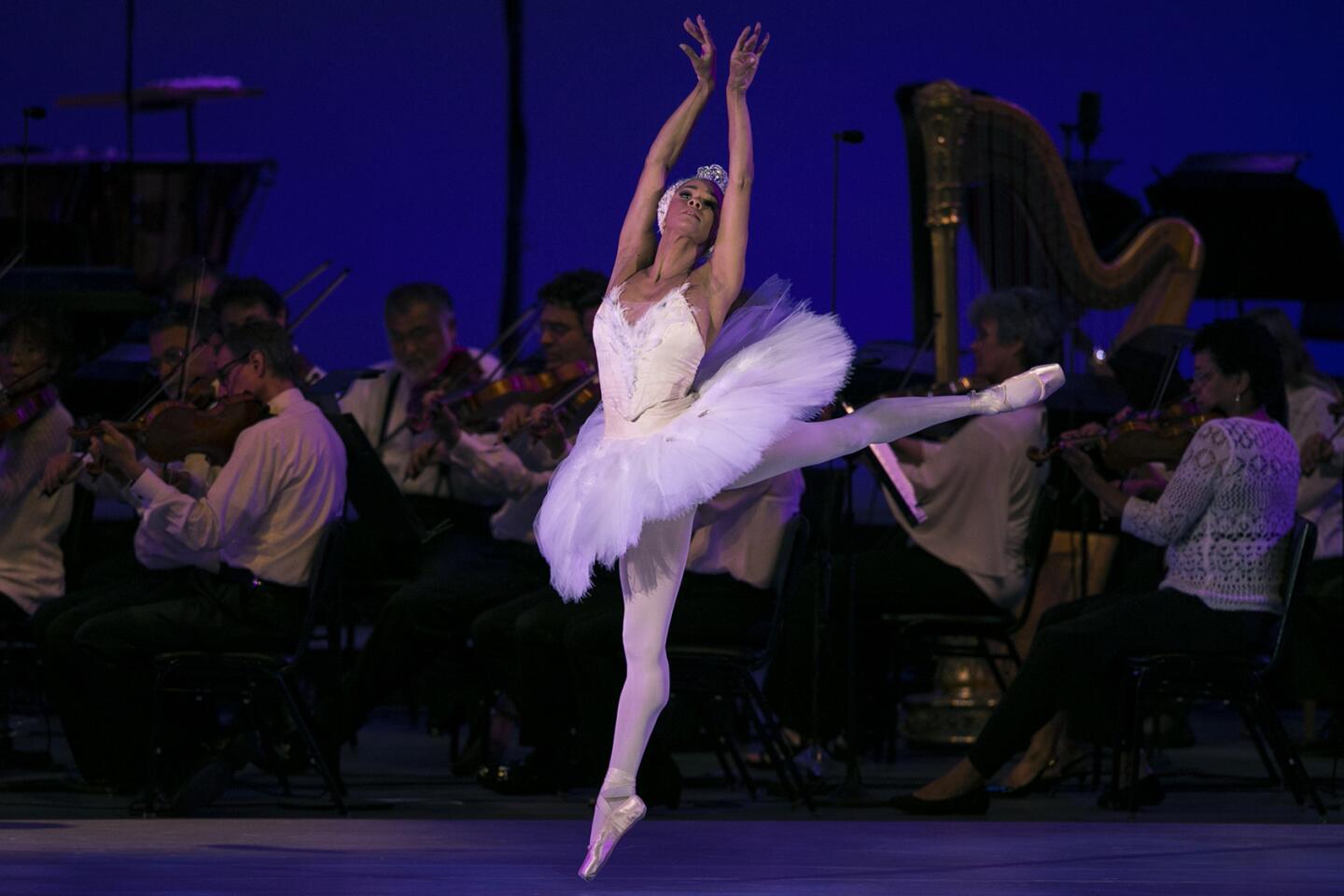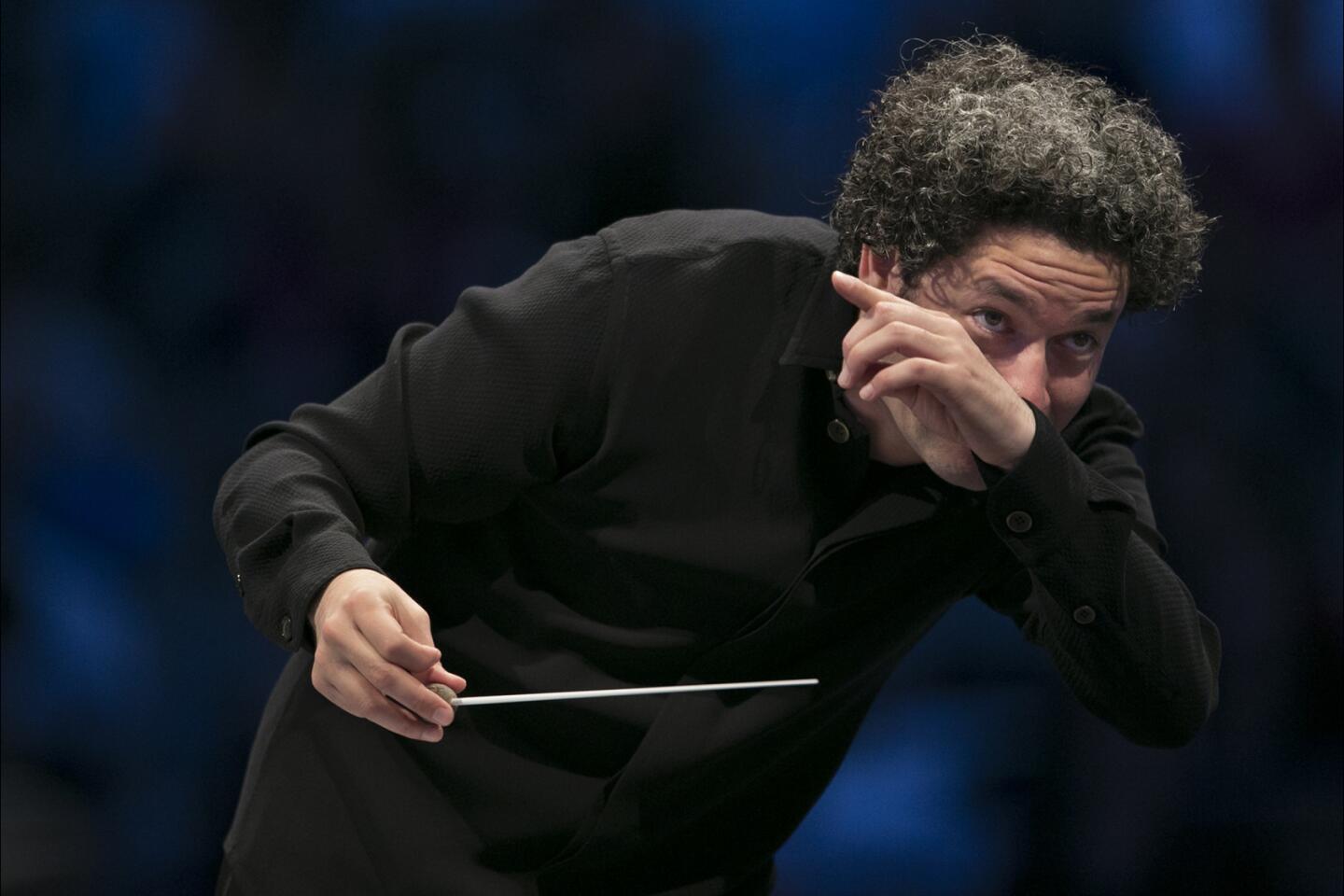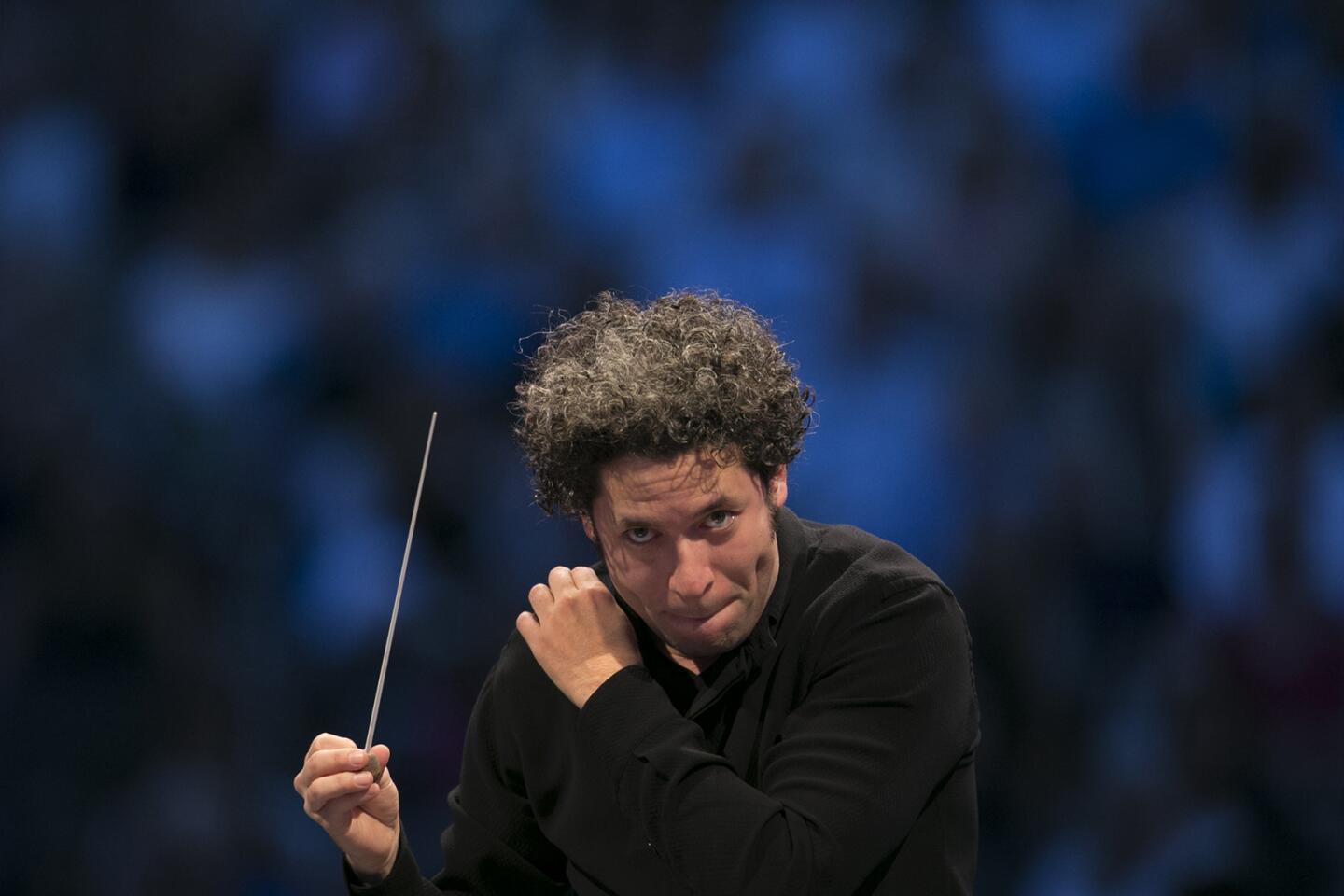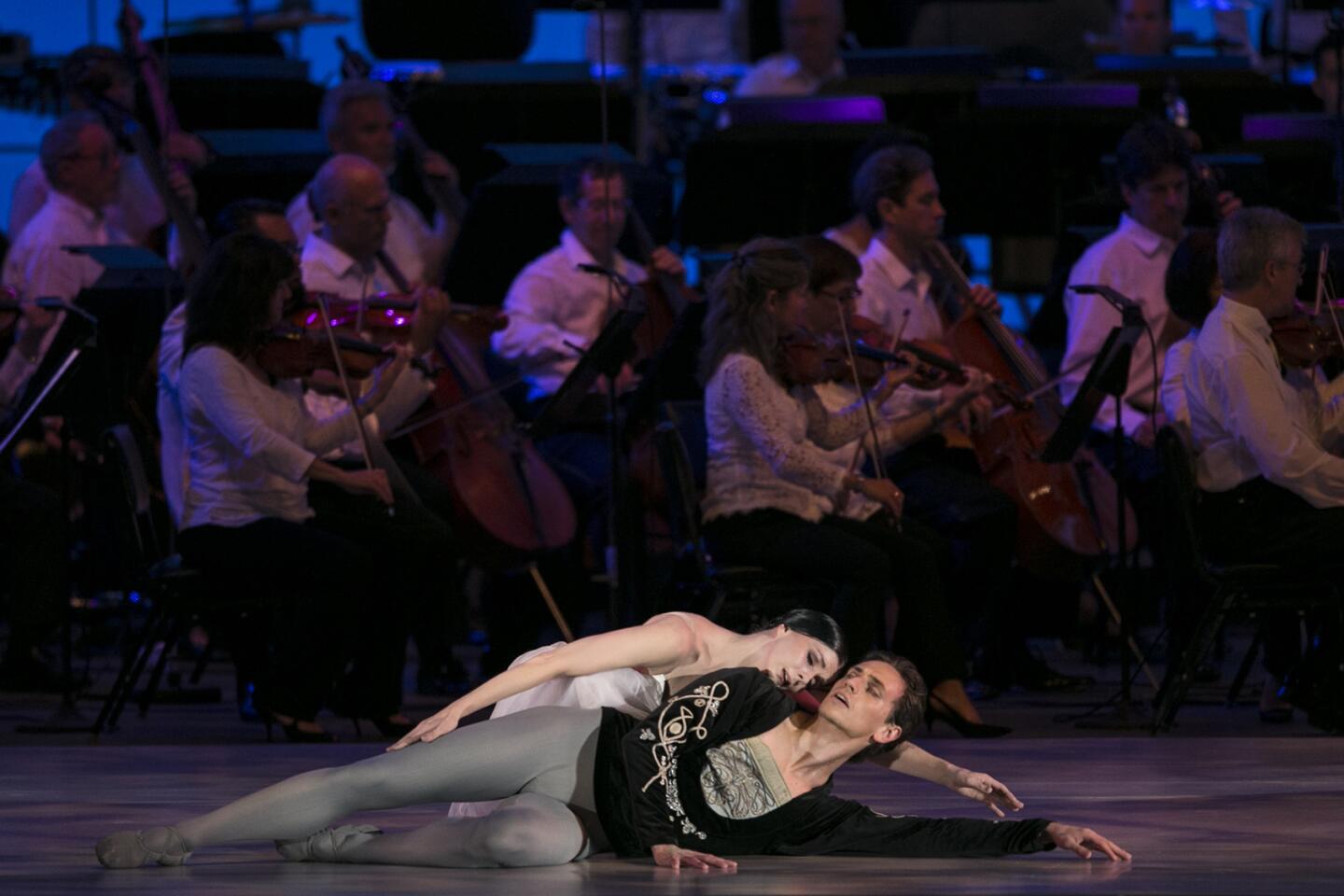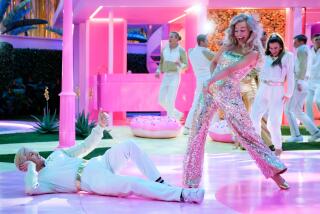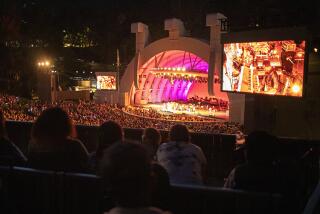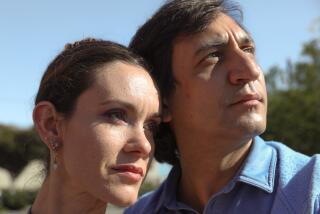Review: Gustavo Dudamel gives Misty Copeland the royal treatment in the Hollywood Bowl’s classical opener
American Ballet Theatre finished its New York season with a Tchaikovsky Spectacular last weekend that freed two of its biggest stars, Misty Copeland and Marcelo Gomes, to appear at the Hollywood Bowl on Tuesday night. Freed and prepared.
The New York Times noted that ABT’s orchestra had been in admirable form and that Copeland has become such a draw that the company can count on her filling the nearly 4,000-seat Metropolitan Opera house. At the Bowl, the orchestral ante was upped. Copeland and Gomes, along with Natalia Osipova and Sergei Polunin, performed with no less than Gustavo Dudamel and the Los Angeles Philharmonic for the opening night of the orchestra’s classical Bowl season.
The crowd, moreover, was in the neighborhood of four times what the Met holds. The L.A. Phil no longer provides audience statistics (explaining that they were never more than guesses in the past, anyway). But the amphitheater looked packed. The lines were LAX-long to get through the Bowl’s new (and welcome) metal detectors. Traffic, I’m told, was two-hours-plus from the Westside. But nothing stopped ’em from coming.
For all that, there was little dancing, and less (though some) imaginative dancing. But the evening was extremely pleasant. Thanks to global warming or whatever, instead of a chilly early July night in the Bowl (archival photos in the Bowl museum show women in the 1930s and 1940s wearing mink coats to picnic in the boxes), it was warm enough for the men in the orchestra to have removed their white jackets and play in shirtsleeves. The dancers had no worry about shivering.
The program itself was ripe for a summer’s evening. A short first half included orchestral bonbons from Tchaikovsky’s “The Sleeping Beauty” and “Swan Lake,” with Gomes and Copeland each curiously taking a brief turn as the White Swan. Their more substantial and impressive pas de deux later was the balcony scene from Prokofiev’s “Romeo and Juliet,” of which Dudamel also conducted three brief orchestral selections. The other ballet excerpted was “Giselle,” with Osipova and Polunin dancing the grand pas de deux and variations from the second act.
As much a luxury as performing with Dudamel and the L.A. Phil may be, dancers often prefer simply working with the same conductor and orchestra, day in and day out — musicians who can serve them, never altering tempo or balances. The last thing they may want is fancy, unpredictable interpretations.
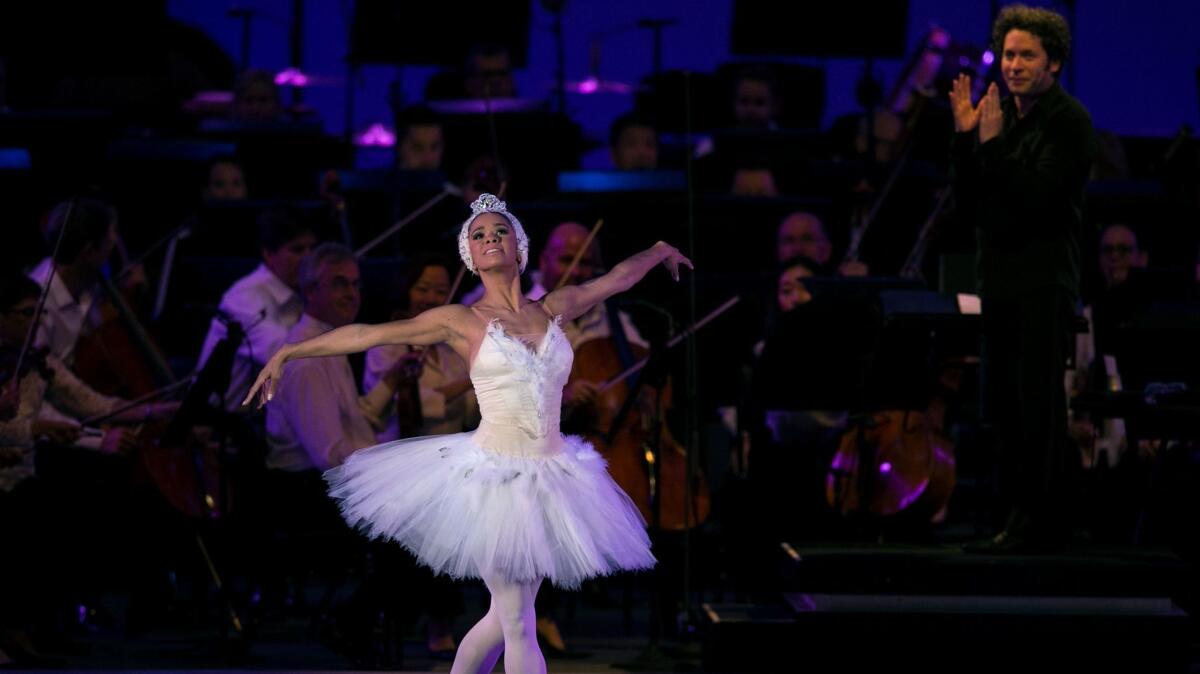
The Bowl adds the challenge of dancing in front of the orchestra, which meant Dudamel conducted without making any connection with the dancers. The stage is plenty large, with lots of room for exciting flying entrances and exits, but another oddity is that the vast majority of viewers watches on video screens.
All that said, Dudamel conducted everything, even the musically formulaic Adam score to “Giselle,” with a lively flair that allowed the bits from each ballet to set the tone for dancing. While the music tends to be a piece of cake for the orchestra, the idea of bringing ballet into a symphonic setting is the least noted of all the different ways Dudamel has been stretching the reach of the L.A. Phil.
And there was real stretching for both orchestra and dancers in “Romeo and Juliet.” In February, Dudamel led an explosive performance of a suite from the ballet with quicksilver tempos only animated dancers might have been able to handle. He did so again Tuesday, before Copeland and Gomes appeared, creating in the mind’s ear an unrealistically agile young Juliet and dashing Romeo.
But the balcony scene’s music is slower, and Dudamel produced a silvery atmosphere that inspired from Copeland to project real personality rather than her usual impressive determinism. Beyond a believably swooning girlishness, she implied a Juliet of substance, all the more touching thanks to Gomes’ mature strength and support.
Their White Swan solos in the first half, though, were another matter. First Gomes impersonated the mysteriously male alternative swan in Matthew Bourne’s “Swan Lake.” Copeland followed in the same solo, but as a dutiful White Swan in a modified version of Petipa’s traditional choreography.
For the old school, Osipova’s Giselle was formidable, and Polunin’s Albrecht spectacular. But like the competing swans, this too felt ill conceived in the context of the evening — as if to say, well, these Russian and Ukrainian partners were meant to show how it’s really done, whereas the ABT dancers show how it’s done today.
In the end, Dudamel is one who showed them all how, musically, it’s rarely done in the ballet pit. The best part of all was how the large crowd (much of it likely new to dance) ate the show up. I wonder whether anything could have prepared the dancers for that.
ALSO
At the G-20, Beethoven is played and the world listened (maybe)
Classical calendar: Upcoming concerts
Dance calendar: Upcoming performances
Travis Wall brings a dizzying, sudsy dance spectacle to UCLA
More to Read
The biggest entertainment stories
Get our big stories about Hollywood, film, television, music, arts, culture and more right in your inbox as soon as they publish.
You may occasionally receive promotional content from the Los Angeles Times.
